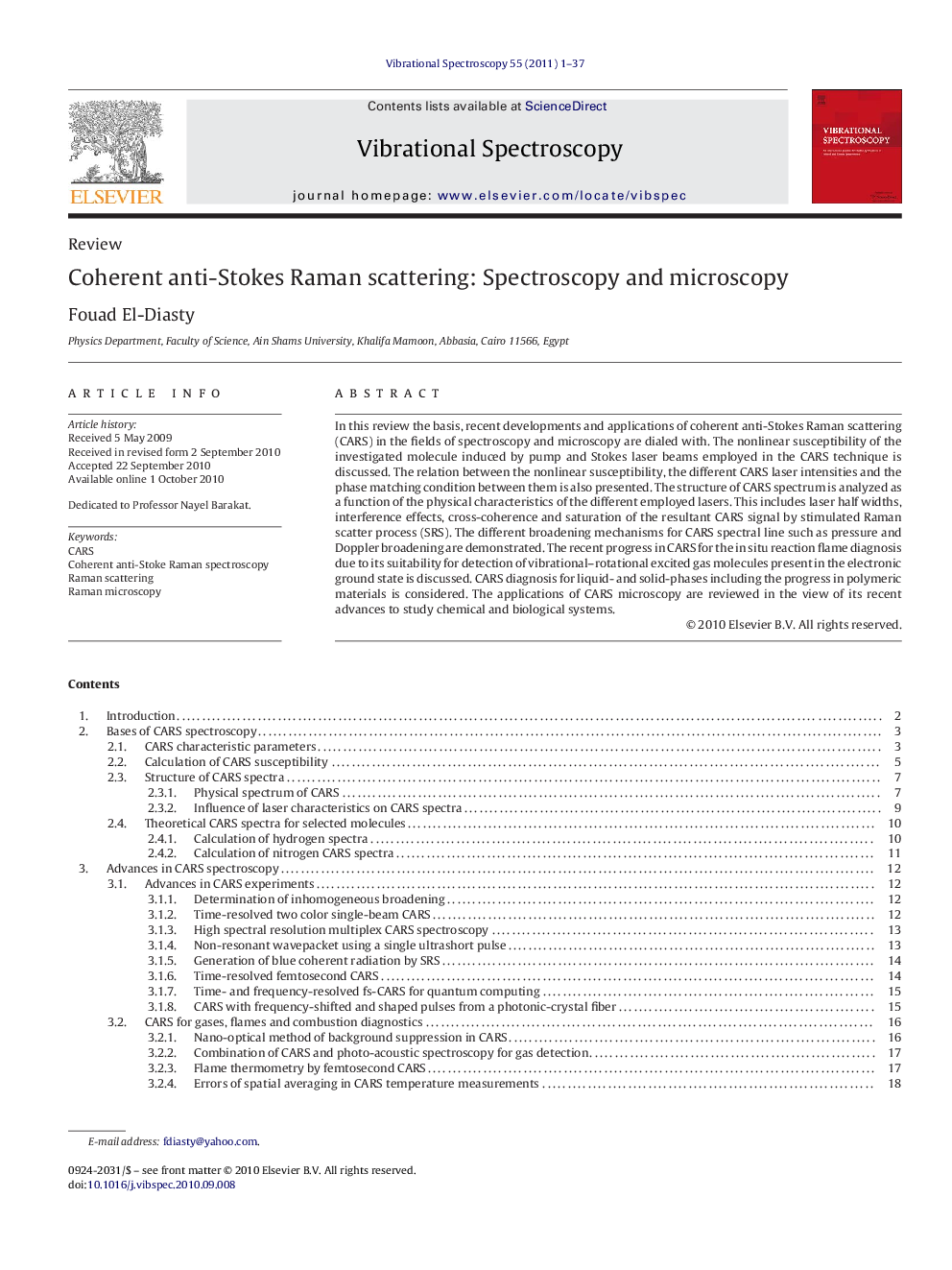| Article ID | Journal | Published Year | Pages | File Type |
|---|---|---|---|---|
| 1250279 | Vibrational Spectroscopy | 2011 | 37 Pages |
In this review the basis, recent developments and applications of coherent anti-Stokes Raman scattering (CARS) in the fields of spectroscopy and microscopy are dialed with. The nonlinear susceptibility of the investigated molecule induced by pump and Stokes laser beams employed in the CARS technique is discussed. The relation between the nonlinear susceptibility, the different CARS laser intensities and the phase matching condition between them is also presented. The structure of CARS spectrum is analyzed as a function of the physical characteristics of the different employed lasers. This includes laser half widths, interference effects, cross-coherence and saturation of the resultant CARS signal by stimulated Raman scatter process (SRS). The different broadening mechanisms for CARS spectral line such as pressure and Doppler broadening are demonstrated. The recent progress in CARS for the in situ reaction flame diagnosis due to its suitability for detection of vibrational–rotational excited gas molecules present in the electronic ground state is discussed. CARS diagnosis for liquid- and solid-phases including the progress in polymeric materials is considered. The applications of CARS microscopy are reviewed in the view of its recent advances to study chemical and biological systems.
